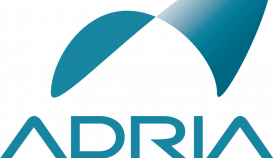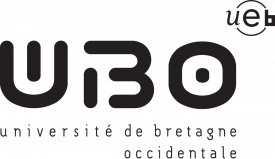Projet ANR-10-ALIA-002
Coordinator : ADRIA DEVELOPPEMENT
Period: January 17, 2011 - January 17, 2015
Partners : ADRIA Développement ; LNE ; AERIAL ; AIR LIQUIDE ; ADRIA NORMANDIE ; LUBEM-UBO université de Bretagne Occidentale ; INRA\METARISK, IATE ; SOREDAB
Background and objectives: Modeling and optimizing gas packaging of fresh foods
Food shelf lives are limited by bacterial growth and the resulting changes in flavor, odor and color. Modified Atmosphere Packaging (MAP) can help slow down these changes and better guarantee food quality and microbiological safety. The gases most commonly used are carbon dioxide for its bacteriostatic effect, nitrogen for its inertness, and sometimes oxygen. Packaging acts as a barrier and regulator of gas and water vapor transfers with the outside world. As soon as the food is gassed, mass transfers take place: permeation through the packaging, solubilization and diffusion of the gas in the food. These three types of transfer have an impact on the efficiency of EAMs, which also depends on the bacteria's sensitivity to gas, in interaction with environmental factors such as temperature and pH. The coupling of mathematical models of matter transfer and predictive microbiology will enable us to estimate the efficiency of AEMs. These models will make it possible to prioritize the physical and biological mechanisms occurring in the food/packaging system, identify the most impactful, predict efficacy and optimize packaging materials, their volume and gas contents.
Scientific approach: Analytical and IT methods to measure and capitalize on the data needed to build mathematical models
A synthesis of available methods for measuring the solubility and diffusivity of O2 and CO2 has been carried out and published. The solubility and diffusivity of CO2 (SCO2 and DCO2) were acquired from experimental set-ups developed during the project. Over 40 values of SO2, SCO2 and DO2, DCO2 were acquired and implemented in a database, on real products such as processed cheese, cooked ham and butter. This database was supplemented by more than 200 data from the literature, including packaging permeability data. This collection required the development of new IT tools to acquire and assemble new data, these tools being based on ontologies.
Methods for quantifying the effect of CO2, on bacteria independently of acidification have been developed. The active molecule was identified (H2CO3). The sensitivity of the strains selected during the project was estimated by the minimum inhibitory concentration (MIC) of H2CO3. For aerobic germs, growth kinetics as a function of O2 content were modeled, and the minimum O2 content required for growth was determined and capitalized. For strict anaerobes, the maximum amounts of O2 enabling growth were acquired.
Main results
A database on packaging gas permeability and gas solubilities and diffusivities (O2/CO2) in foods has been compiled (over 500 permeability values and over 200 solubility/diffusivity values). The gas transfer models were validated on the food/packaging pair using dedicated experiments and challenge tests. The effects of gases on bacterial development were combined with existing models, taking into account the effects of temperature, pH and aw. Material transfer models in the food/packaging system were coupled to predictive microbiology models in a single EDO (Ordinary Differential Equations) system, enabling the dynamics of gas profiles in the food to be taken into account in the growth model, something that had never been done before. The general model, coupled with the databases, has been integrated into a user-friendly application enabling consortium members to carry out simulations in numerous real-life EAM cases (food and packaging geometries) and for the two microorganisms studied in the project, Listeria and Pseudomonas. The results of the project will enable companies to optimize the use of packaging by choosing a material and its permeability, adjusting its geometry and reducing its volume. Optimizing EAMs will also help guarantee product shelf life while limiting the use of chemical preservatives. Over and above the positive impact on the environmental impact of the food/packaging pairing linked to better control over the choice of packaging material, extending shelf life via EAM should make it possible to limit food wastage of products, and in this way further limit the environmental impact of the food chain.
Scientific production and patents
2 theses, 3 international publications accepted, 2 publications submitted, 1 publication in preparation, 6 international conferences and posters, 6 French-speaking conferences and workshops, 1 popularization article, 8 popularization conferences, 1 workshop in preparation (April 2, 2015 in Paris in conjunction with the Actia PROPACKFOOD and QUALIMA RMTs), 1 professional training course completed and one scheduled in 2015. Packaging database and simulation software. Training course modules accessible via internet.
Useful links
Partners






